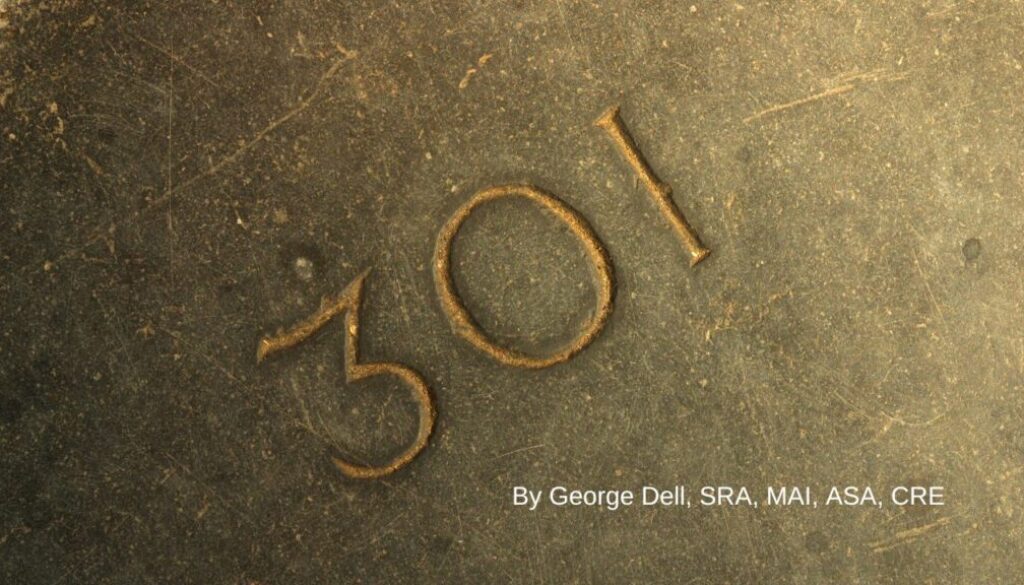Three-Hundred plus One! Cyndi Law is our editor-in-chief, webmistress, and main force for Valuemetrics. She informed me, from the results of our internet provider’s SEO rules, that last week was our three-hundredth post! And the topic, appropriately, was how outdated ‘established’ appraiser education blocks better valuations, better economic health, and enlightened public policy.
The outdated education also gnaws away at the usefulness of the field-related expert – the experienced, technically competent appraiser.
Three hundred! Some six years of questioning and entreating blogs. Questions and wonder.
The questions are fundamental. How can real ethics, relevant science, and today’s computer software help solve today’s economic and social challenges. The challenges include:
- Recurring economic turndowns involving real property
- Deeply embedded ‘frictions’ on progress
- Accusations of bias in value opinions
- Lack of diversity in licensees
- Standards inconsistencies
- Regulatory biasness
The conflicts I see include the following:
- Algorithms versus judgment (AVMs versus appraisers)
- Statistical mumbo jumbo versus actual market analytics
- Appraisal upward ‘fixing’ harming the new minority buyer
- Unresolved, embedded inclusivity, bias, and subjectivity issues
- Convoluted appraiser regulation, with unregulated competitors
So why is education fixated on “established methods and practices”? It is simply the result of, and the cause of, the other four ‘frictions’ holding back progress: (peer practice, standards, regulation, user expectations). Everyone in the system, whether teachers, reviewers, regulators, and even professional authorities, all learned the ‘right way’. We pick comps, make adjustments, and explain in words why the numbers don’t match – in the required “three approaches.” Or more practically, simply match the sale price or point-value needed number.
The teachers/authors are/were students in the traditional, subjective ‘pick comps’ school. USPAP requires it (do what your peers do). Regulations and ‘state approved’ education must comply to each other, and to established methods and user expectations. They must all comply with each other!
And finally, even as valuation is now substantially a numbers game, still the fallacy of one-appraiser-training-another (craftsman-apprentice model) continues. And it is embedded and perpetuated in PAREA, the (Practical Applications of Real Estate), intended to be an option to the “trainee/supervisor” model. PAREA formalizes and deepens the emphasis on many obsolescent practices.
The prescribed PAREA outline itself repeats the appraisal theory, and can only be used after all qualifying education is complete. (Which may work to lengthen, not shorten licensing time.)
It basically repeats the old, obsolescent, traditional appraisal practice: pick comps, adjust, support. I see only slight mention of the fundamental and key elements of modern analysis: market identification, market analysis, statistical concepts and tools, and critical thinking.
At best, the focus seems to be how to use today’s technology to do it the old way.

October 5, 2022 @ 5:43 am
Inertia is a powerful force.
October 5, 2022 @ 7:19 am
George, thank you for being there and continuing to push forward for our profession.